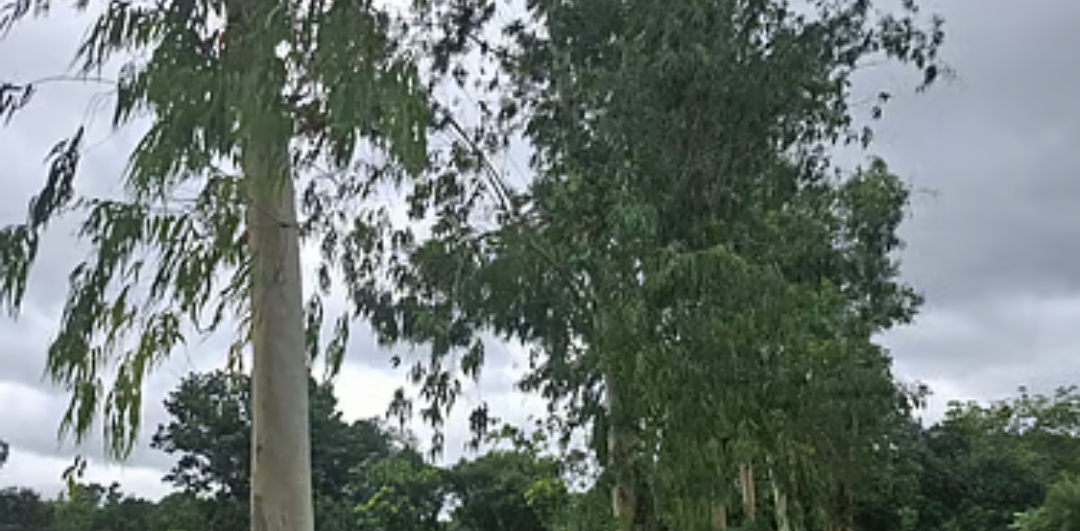Desk Report,
Eucalyptus-Akashmani debate: Enemy of the environment or source of wood?
A row of eucalyptus trees has grown in front of Basudebpur High School in Charghat Upazila of Rajshahi File photo Prothom Alo
Eucalyptus-Akashmani debate: Enemy of the environment or source of wood?
Many foreign trees have become part of the country’s vegetation by integrating with the soil, water and weather of Bangladesh. However, there is controversy about eucalyptus and akasamoni. Recently, the government banned the production, planting and sale of seedlings of the two trees. In view of this, the issue of controversy has come to the fore again.
There are various allegations about eucalyptus and akasamoni trees such as excessive water absorption, soil infertile, and creating an unsuitable environment for birds. Although the two trees play a major role in meeting the country’s wood demand.
Research has revealed that the Bangladesh Forest Research Institute started experimental planting of eucalyptus and akasamoni seedlings in the 1980s to reduce pressure on natural forests, including meeting the wood demand.
Botanists and researchers say that eucalyptus and acacia trees grow quickly and meet the demand for wood, but they absorb more water and make the soil rough. Cows and goats do not eat the leaves of these trees. Birds do not nest in the trees either. According to the Forest Department, the annual demand for wood in Bangladesh is 8 million cubic feet. 3 million cubic feet of wood is imported from Myanmar and other countries. The department does not have information on how much wood from acacia trees and eucalyptus trees meets the demand.
On May 15, the government issued a notification banning the production, planting and sale of eucalyptus and acacia tree seedlings. The notification stated that such a decision was taken in the interest of preserving the environment, ecology and biodiversity, and in fulfillment of national and international commitments.
Regarding the issuance of the notification, Tushar Kumar Pal, Deputy Secretary, Forest-1 Branch of the Ministry of Forest and Environment, said, “Various studies have shown that these trees have high water absorption capacity and make the soil rough. Therefore, to protect the country’s biodiversity, instructions have been given for afforestation by planting seedlings of indigenous species of fruit, forest and medicinal trees instead of planting seedlings of invasive species.”



